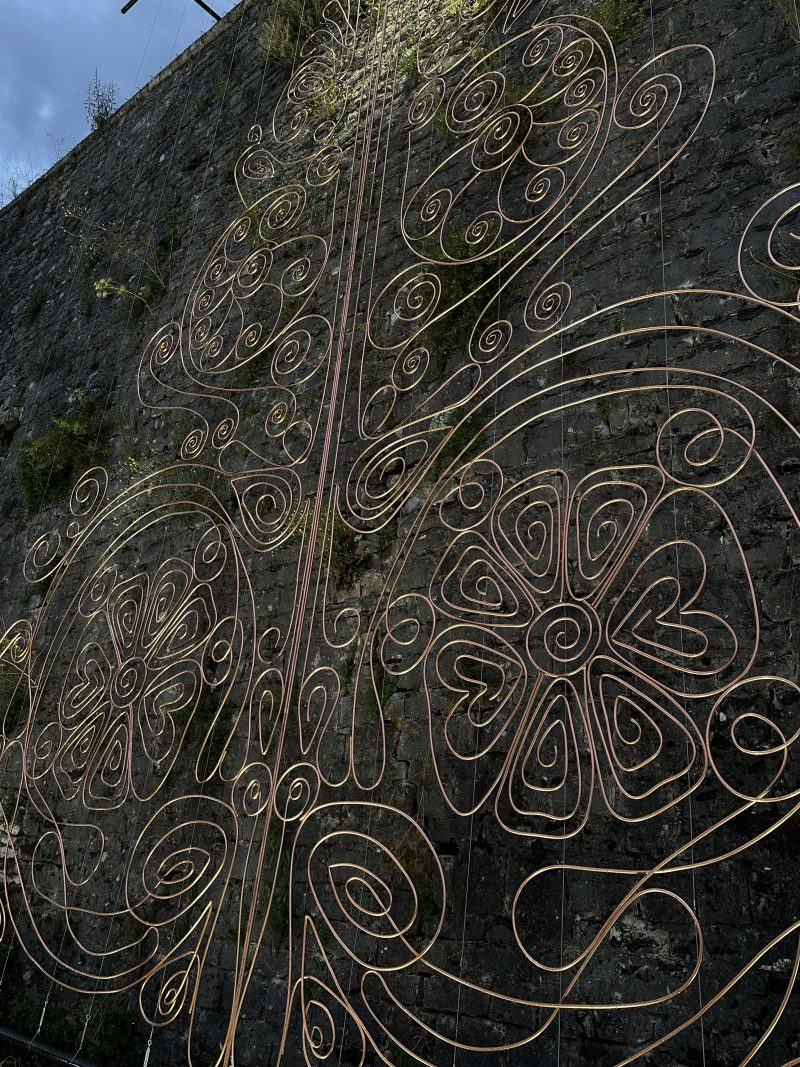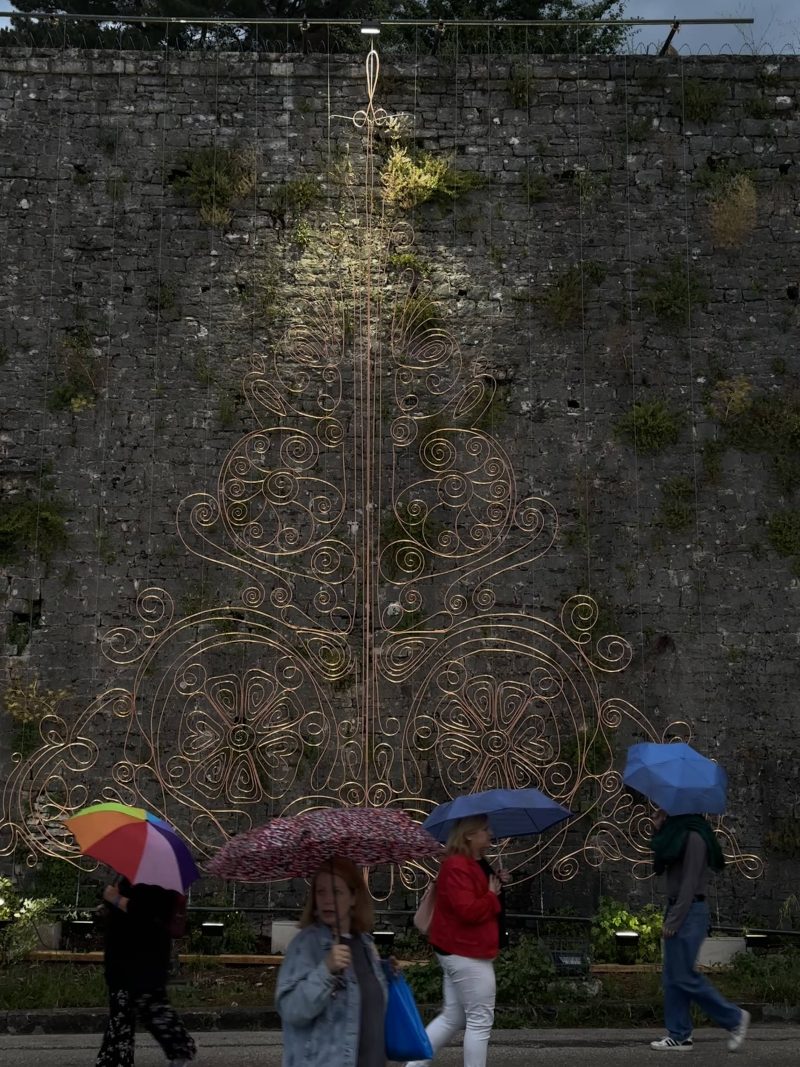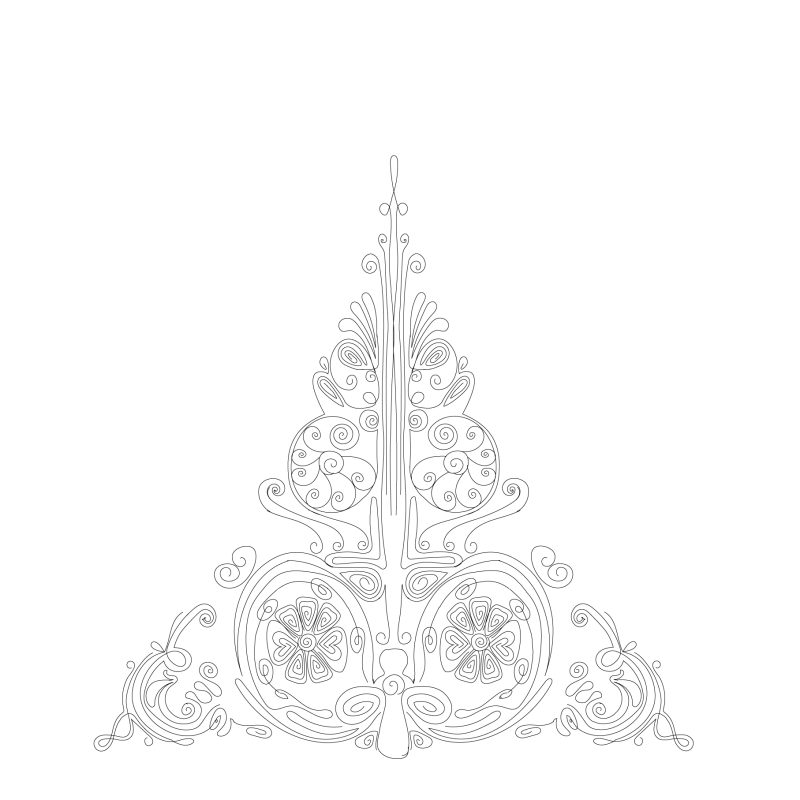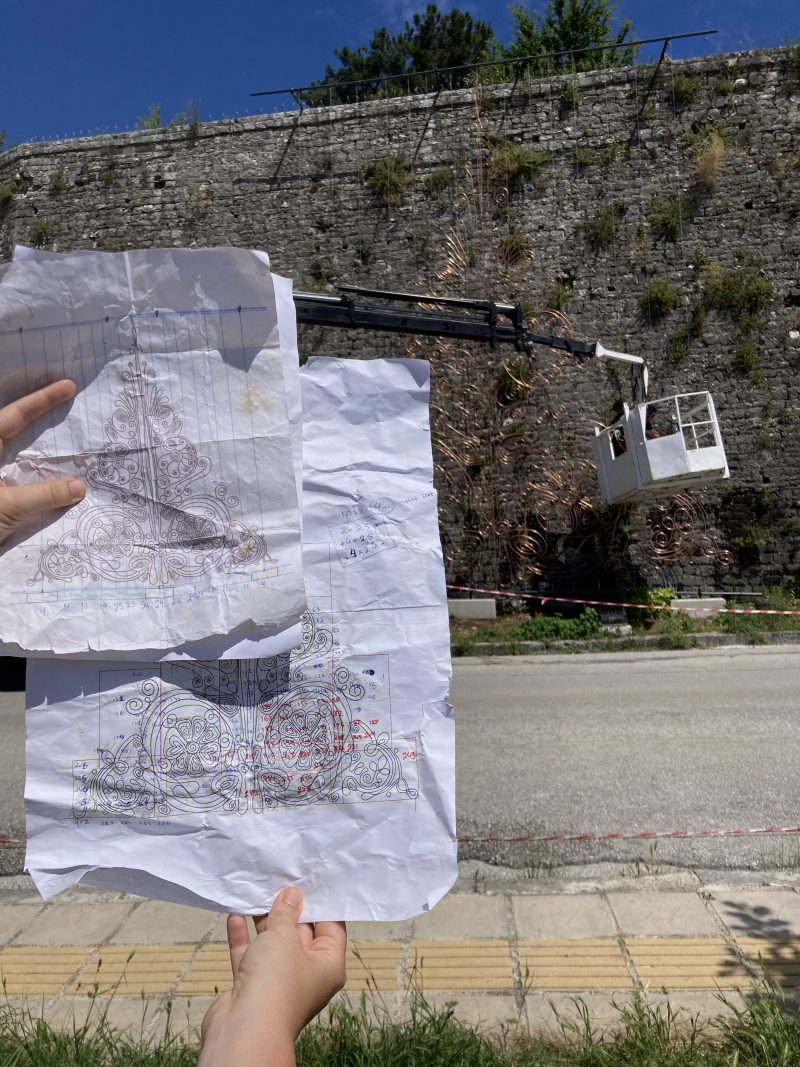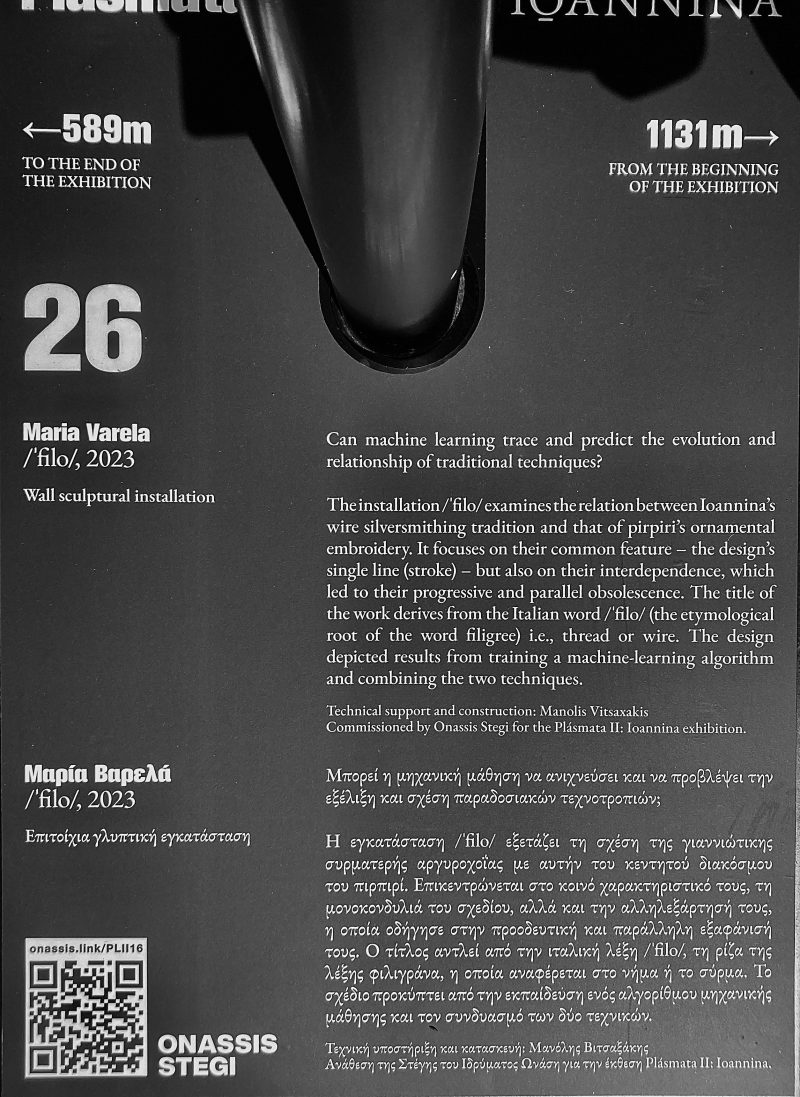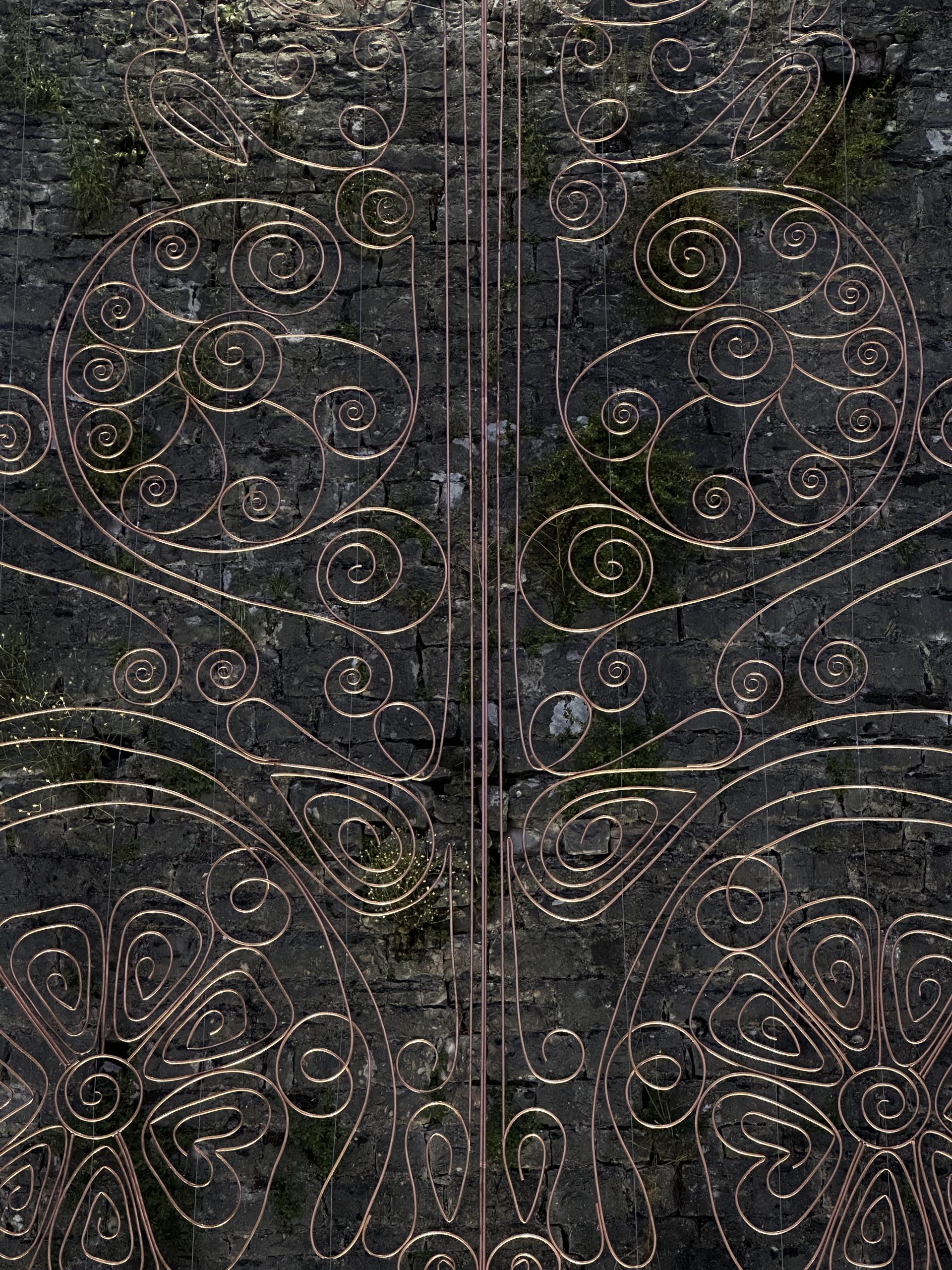/ˈfilo/
Filigree, an ornamental technique utilizing wire, is a typical example of Ioannina’s popular silversmithing and craftsmanship tradition. The jewelry that fastened and connected parts of the traditional costume were part of the garment until the early 19th century. Accordingly, the ‘pirpiri,’ a valuable sleeveless overcoat worn in the past by women in Ioannina, presents a typical example of the so-called ‘terzidic’ embroidery. The Epirotic expression “one pirpiri, three generations” describes the passing of this garment from mother to daughter, and therefore the connection between different generations. Varela’s installation examines the relation between Ioannina’s wire silversmithing tradition, and that of pirpiri’s ornamental embroidery, and focuses on their common feature – the design’s single line (stroke) – but also on their interdependence, which led to their progressive and parallel obsolescence. The title of the work derives from the Italian word /ˈfilo/ (the etymological root of the word filigree), which refers to the decorative material – i.e., thread or wire. The design depicted results from training a machine-learning algorithm and combining the two techniques, and explores whether the technology can become part of and support the continuation of a traditional technique and art.
The work is commissioned by Onassis Stegi for the “Plásmata ΙΙ: Ioannina” exhibition.
Photos by Pinelopi Gerasimou for Onassis Stegi
dimensions
8m x 8m
exhibition
Plasmata II
curator
Prodromos Tsiavos, Daphne Dragona
production
Onassis Stegi
year
2023
